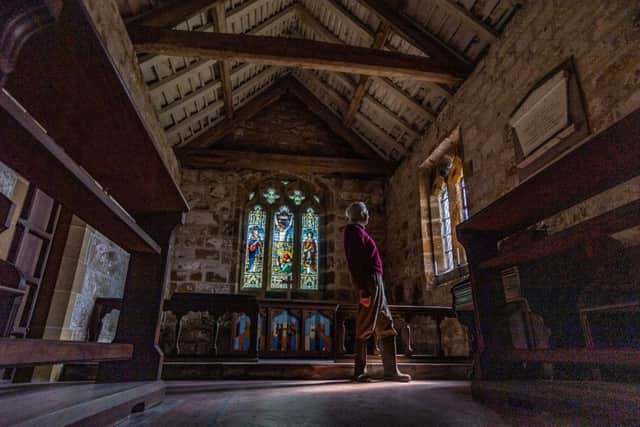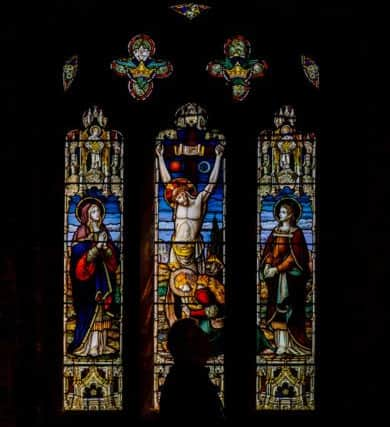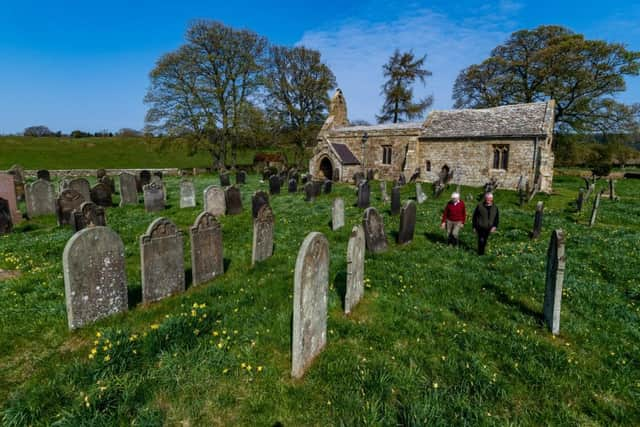In open pasture in the North York Moors, a tiny church as old as Notre-Dame sees an Easter rebirth
The 12th century church of St Mary’s, in the middle of open pasture, surrounded by daffodils and bluebells, and a 10-minute walk from the hamlet of Over Silton in the North York Moors National Park, is one of the smallest in Yorkshire.
Its interior is too cold for services in winter, but its opening for the new season at 7am on Easter Sunday will see a fitting resurrection, as it announces a funding package that will see it repaired and made good for another century.
Advertisement
Hide AdAdvertisement
Hide AdConstructed to modest proportions at the same time as the grand statement of Notre-Dame in Paris, the church is one of only a few places of worship in rural Yorkshire never to have changed over the years.


Even when its parish fell victim to the Black Death, it stood fast, until new settlers from over the field reclaimed it.
Unreachable except by foot, it remains a place of prayer for up to 30 people at a time – around half Over Silton’s population.
But its congregation is scattered much further. Like Notre-Dame, it attracts pilgrims from around the world, most recently Japan, Australia and the US, fascinated by its age and quaint, English country setting.
Advertisement
Hide AdAdvertisement
Hide Ad“It’s pretty old school,” said John Aston, of the parochial church council for Over Silton and its neighbour, Nether Silton.


“To get to it, you’ve got a 150-yard walk over a grassy, or depending on the weather, snowy or muddy cow-filled field.
“But it’s the sort of place that resonates far outside its area. The visitors’ book is bulging, and it’s a big attraction for walkers.”
The locals suspect that the original village surrounded the church and its stream, but moved up the road when the plague or enemy forces wiped it out.
Advertisement
Hide AdAdvertisement
Hide Ad“The village now is early 19th century but the church is about 600 years older,” Mr Aston said.


Around £28,000 from the National Lottery and a donation from the Wolfson Foundation and other charities will pay for re-roofing the chancel and vestry and rebuilding the boundary walls.
But it will remain without electricity or running water, which would require the installation of expensive underground cables and pipes.
The money will go instead on specialist expertise and traditional materials that will not damage the fabric of the church.
Advertisement
Hide AdAdvertisement
Hide Ad“When you’ve got a 900-year-old building, it demands a very sympathetic approach. You can’t use normal cement, you’ve got to use a certain type of limestone cement,” Mr Aston said.”
Paul Playford, of the Allchurches Trust, which contributed to the fund raising, called St Mary’s “a heritage gem of historical significance”, and its warden, John Inch, said: “We will be able to ensure our wonderful church remains open for many years to come.
“St Mary’s is for everybody to visit and enjoy, from the residents of Over Silton and surrounding villages to walkers who are exploring this quiet and beautiful corner of the North York Moors National Park.”
Some 25 years ago, a bequest from a parishioner brought St Mary’s a brief spell in the spotlight.
Advertisement
Hide AdAdvertisement
Hide AdDoris Wilkinson left around £18,000 and expressed in her will the hope that electricity could be installed.
“She played the organ and had to climb a stepladder to light the candles,” said Joanne Aston, the former warden.
“But the building was in such a poor state of repair, it would have been impossible. We’d have spent all our money just on the underground cable.”
The quandary attracted national attention, and the BBC mounted a live broadcast of a rare winter service there.